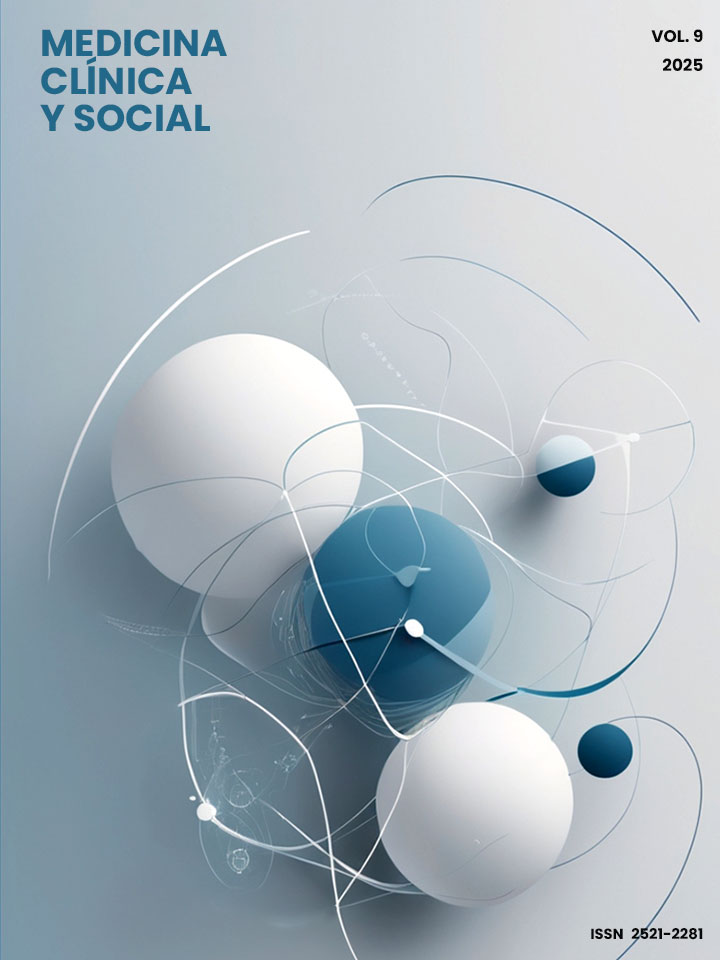The Distance to Mental Health Services and the Use of Public Transportation: A Challenge for Timely Care
DOI:
https://doi.org/10.52379/mcs.v9.566Abstract
Access to mental health services is a crucial issue in healthcare worldwide, particularly in low- and middle-income countries, such as Paraguay. Factors such as geographical distance to care centers and availability of public transportation can significantly influence how quickly a person receives treatment. This editorial draws on findings from a study conducted at the Hospital de Clínicas of the National University of Asunción, which analyzed the relationship between distance to psychiatric services, use of public transportation, and duration of untreated mental disorders (1).
Effective treatment of mental disorders depends on timely and continuous access to specialized services. However, physical distance from health centers and limited public transportation options often delay treatment, exacerbate symptoms, and diminish the quality of life. In this study, it was found that, although the average distance to the hospital was 10 km, there was no significant relationship between distance and the severity of anxiety or depression symptoms. Nevertheless, patients who spent more time traveling reported higher levels of anxiety, indicating that it is the duration of the journey, rather than the distance itself, that impacts anxiety levels (2,3).
Access to mental health services, particularly in urban areas, depends heavily on public transportation. In the aforementioned study by Márquez (1), 45.2% of the patients relied on public transport to reach the hospital, and most had to take two buses. A small percentage required more connections, leading to long and exhausting trips. These findings highlight how public transportation quality and availability directly affect access to mental health services, a trend also observed in studies from other countries, where inadequate transport is a major barrier to timely mental healthcare (4).
Research has consistently shown that inefficient public transportation is a significant obstacle in accessing psychiatric care. In areas where transportation is limited or expensive, the likelihood of seeking treatment drops dramatically (5). This issue is particularly pressing in rural areas, where people often travel long distances without access to regular public transportation or emergency psychiatric services, which adds another layer of difficulty in receiving adequate care.
The duration of untreated mental disorders is a critical factor for symptom severity. This study found a correlation between delayed diagnosis and the severity of depression symptoms, reinforcing existing evidence that untreated mental health issues tend to worsen over time, increasing the burden on both patients and the healthcare system. The phenomenon known as "distance decay," which refers to the decreasing likelihood of seeking medical care as the distance to health services increases, has been documented in numerous studies (5).
Given these findings, it is imperative to consider strategies for improving access to mental health services. One potential solution is to decentralize psychiatric care, allowing rural and disadvantaged communities to receive quality care without having to travel long distances. Establishing community mental health centers in peripheral areas, staffed with trained personnel, and equipped with telehealth capabilities could ease the strain on urban hospitals and ensure earlier access to treatment (5,6).
Moreover, enhancing the public transportation infrastructure is essential for improving access to mental health services. Implementing policies that subsidize transportation costs for patients, such as free or reduced-fare bus passes for medical appointments, could help mitigate barriers related to transportation (7). In some countries, such measures have successfully improved mobility and healthcare access for vulnerable populations, suggesting that similar policies in Paraguay can yield comparable benefits.
Ultimately, access to mental health services should not depend on geographical location or reliable transportation. Distance and transportation barriers are avoidable obstacles that, if properly addressed, can reduce the duration of untreated mental disorders and substantially improve the quality of life of affected individuals. Achieving this will require coordinated efforts among health authorities, urban planners, and policymakers to ensure that public transportation is accessible and that mental health services are available to all, regardless of location.
Access to mental health services is a basic right and ensuring efficient provision is crucial for the well-being of the population. As the mental health systems in Paraguay and other low- and middle-income countries continue to evolve, addressing barriers such as distance and transportation must be a priority. Only then can it be guaranteed that all citizens, regardless of where they live, have access to the mental health care they need.
Downloads
References
Márquez M. Distancia al Servicio de Psiquiatría del Hospital de Clínicas, uso de transporte público y su asociación a la duración de trastornos mentales no tratados [tesis]. San Lorenzo; Universidad Nacional de Asunción: 2024.
Malinowski F, Noto C, Cavalcante D, Belangero S, Ziebold C, Bressan R, et al. Urban distance to mental healthcare units and public transport increases duration of untreated psychosis in first-episode patients. Int J Soc Psychiatry. 2023;69(8):1938-1948. https://doi.org/10.1177/00207640231180825.
Torales J, Barrios I, Melgarejo O, Amarilla D, O'Higgins M, Navarro R, et al. The Questionnaire on the Use of Public Transportation and Well-Being (QUPTW): A national survey and validation in Paraguay. Journal of Transport & Health. 2024;38:101883. https://doi.org/10.1016/j.jth.2024.101883.
Wang L, Ariwi J. Mental Health Crisis and Spatial Accessibility to Mental Health Services in the City of Toronto: A Geographic Study. Int Health Trends Perspect. 2021;1(2):191–213. https://doi.org/10.32920/ihtp.v1i2.1427.
Muhorakeye O, Biracyaza E. Exploring Barriers to Mental Health Services Utilization at Kabutare District Hospital of Rwanda: Perspectives From Patients. Front Psychol. 2021;12:638377. https://doi.org/10.3389/fpsyg.2021.638377.
Stulz N, Pichler EM, Kawohl W, Hepp U. The gravitational force of mental health services: distance decay effects in a rural Swiss service area. BMC Health Serv Res. 2018;18(1):81. https://doi.org/10.1186/s12913-018-2888-1.
Umubyeyi A, Mogren I, Ntaganira J, Krantz G. Help-seeking behaviours, barriers to care and self-efficacy for seeking mental health care: a population-based study in Rwanda. Soc Psychiatry Psychiatr Epidemiol. 2016;51(1):81-92. https://doi.org/10.1007/s00127-015-1130-2.
Downloads
Published
Issue
Section
License
Copyright (c) 2025 Julio Torales, Mainor Márquez, Iván Barrios

This work is licensed under a Creative Commons Attribution 4.0 International License.






